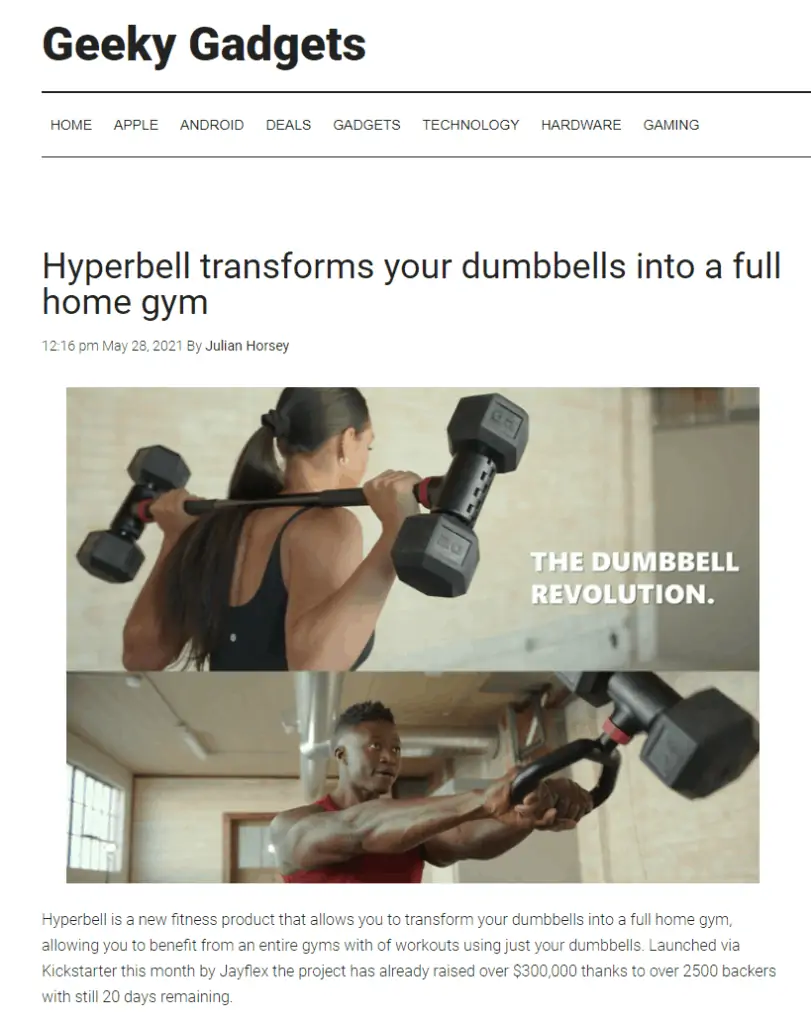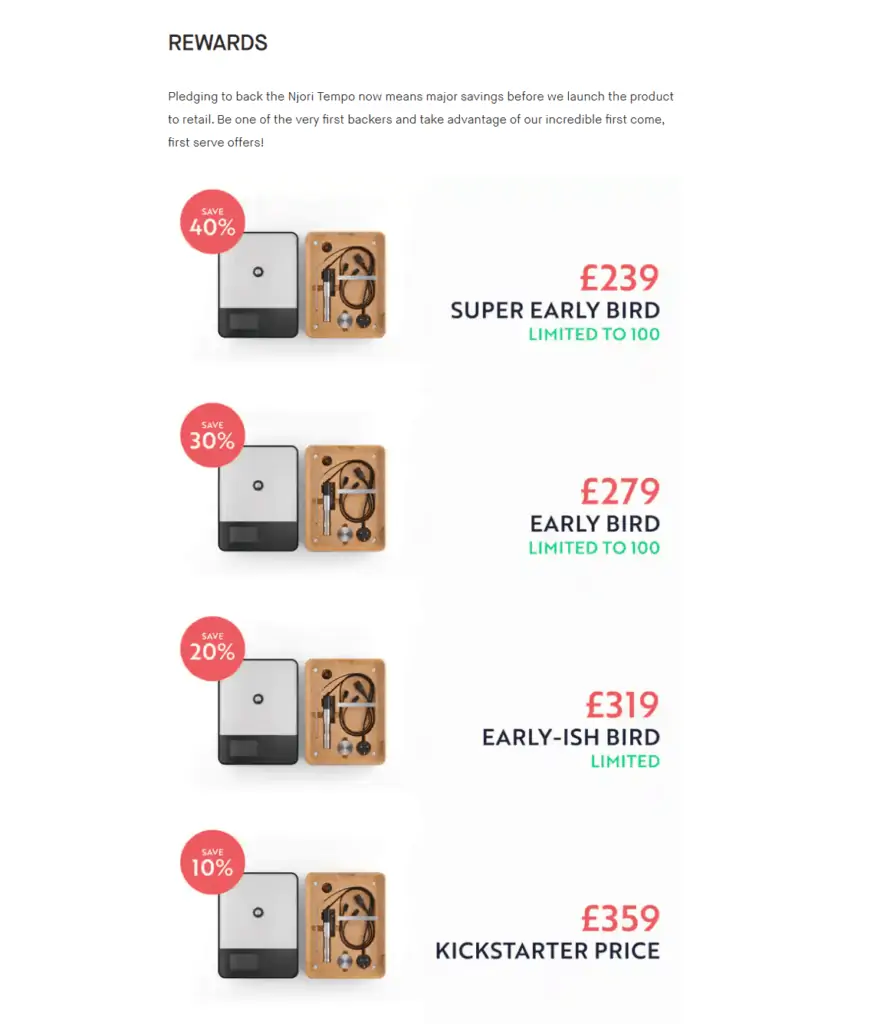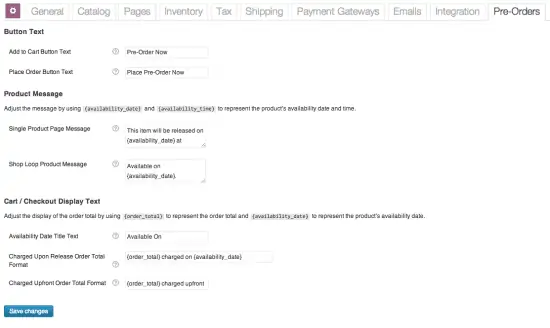Pre-orders aren’t more than regular orders with delayed shipping.
However, the real difference relies on how you sell these products and how you set up your campaign in a way that works for your customers and your business.
Pre-orders are excellent for ecommerce businesses as a way to attract more leads, engage your current customers, validate ideas, and many other benefits.
But, if you want to launch a pre-order for your next product, you need to consider the nuances and best practices to maximize your campaign’s success.
What Pre-Order Marketing Can Do For Your Business
Launching pre-orders has many benefits. And some of them can even help you overcome failures and mitigate risks if you get to choose the wrong product. For example:
- You can test the market demand for your product before launching it. Allowing you to avoid getting short of stock or having over-supply in case your campaign fails.
- Generate buzz around your brand. Expanding your brand awareness and give you a chance to generate more leads.
- Getting upfront revenue to fund the development of your product (in case the pre-orders are paid). And if you charge the pre-orders on release, it can give you an estimate for your future success.
- Serves as a source for great testimonials and customer research if done successfully. You can also get a lot of user-generated content when the product is finally on-stock.
Despite all these benefits, pre-orders won’t work for any product. You simply won’t catch any attention if you pre-launch a product that:
- Is already in the market.
- Brings nothing new.
- It’s just one product more in your catalog.
- Doesn’t resonate with your target audience.
Your product must be unique and catch instant attention the moment people see it. So they don’t take it as yet another out-of-stock product but as a special offer that stands out on its own.
Think about the main reason to launch a pre-order in the first place. You want to introduce an idea to the market and see how it responds. So wouldn’t you need it to be unique? If it isn’t, you’re better off introducing it as a new addition and not as your new flagship product.
Now, if you’re launching a promising product, there are many best practices you’d want to follow on your first try.
7 Pre-Order Marketing Best Practices
1. Start Your Campaign Before The Pre-Order Launch
The first misconception people have when they think about pre-order marketing is that everything happens during the pre-order.
But this is far from true. The critical period is before the pre-order launch.
You see, according to Scalefast, around 15% to 18% of all the pre-orders are made on the first day (or 28% in the case of popular videogames).
Scalefast further explains that:
Interestingly, this trend was seen regardless of the length of the pre-order period. What this indicates is that the most critical period for any product launch is the weeks and months leading up to the pre-order date — not the weeks and months following the pre-order launch. In other words, what eCommerce brands do before launch is much more important than what they do after launch.
Scalefast Report
So, what do you have to do before the pre-order launch? Here are some ideas:
- Create awareness around your new product on social media, ads, email lists, and press releases.
- Collect emails from people who want to get notified when the pre-order is available. And keep them up-to-date with your product progress.
- Create content around your new product. And optimize your website for Google to drive as much organic traffic as possible.
- Prior to the pre-order launch, announce bundles, special editions, and packages that come with your new product.
- Conduct surveys or polls to measure your customer’s expectations of your product.
- Build a dedicated website for the new product only for pre-order purposes (so you can deal with the traffic spike more easily).
Here’s an example of getting exposure before launching. Hyperbell managed to get published on a relevant publication to get more awareness and support their Kickstarter campaign:

Keep in mind that you must plan all of this right from the beginning to avoid improvisations or inconsistencies during your hype-building campaign.
2. Create Urgency During Pre-Launch
Even if you wanted to, you can’t get enough stock for everybody. So take it as an opportunity to create a sense of urgency during your campaign.
Set a golden number that reflects the most sales for your success and less shipping stress for your mental health. And use this number to generate urgency.
There are many ways to go further with this. For instance, you could offer special discounts for the first people who place an order.
You can also play with uncertainty by telling them that they might not get a chance to buy your product for a long time if they don’t pre-order right now.
To illustrate, this is how Njori encourage funders to bid as early as possible on their Kickstarter page by giving them discounts.

Don’t limit yourself. Send promotional emails using this method, invest in Facebook Ads to generate awareness, and do a contest on social media — let your audience know how long they have to place an order.
3. Leverage Influencer Marketing to Build Hype
Influencers are often very engaged with their audience. And they take their opinion very seriously.
So when it comes to promoting your unreleased product. Influencer marketing can help you set up a lot of hype, drive tons of brand awareness, and even increase orders.
However, people know when they’re getting sold. And will instantly stop taking your product seriously if it looks like yet another paid sponsor.
So when collaborating with influencers, make sure that:
- Your product is genuinely helpful for their audience.
- The influencer truly supports your product and isn’t just getting some business.
- The influencer has total freedom to give their honest opinion on your product.
The trick to make influencer marketing work is by working with transparency and respecting the audience.
When done well. The possibilities to collaborate with influencers become vast:
- You can generate a lot of hype over your product and redirect it toward your brand.
- Let influencers test your product and make a review video before full release.
- Write a case study or success story on how your product helped the influencer improve their life.
- Offer special discounts or bundles to the audience with a unique code (this will let you measure your influencer success).
- You can reach out to relevant bloggers as well. Telling them about your product and asking them to publish a blog about your new upcoming product on their website.
Ringly leveraged this by getting creating a success story from a relevant public figure to add more social-proof to their brand.
4. Create Content Regularly to Keep Momentum
Momentum is vital for the success of your pre-order campaign.
And the best way to keep momentum is by publishing relevant content regularly to keep the hype for your product alive and increase your sales.
To get started, make sure to collect the email address of anyone who placed an order. And build a list of pre-order customers.
Here’s where you’re mainly going to distribute your content. And along with your social media audience, these are the people who will care about you and do the job of sharing it with their friends.
When it comes to creating content, there are many ways to handle it, such as:
- Using email marketing software to tease new information and updates about your product to your email list.
- Publishing press releases mentioning new features of your product.
- Writing guest blogs on relevant publications about your new release.
- Talking about your product on podcasts, conferences, and any public event where you can get invited.
- Showing how to use your product with new videos on social media or Youtube.
- Go to communities and inform people about how your product can help (avoid being spammy and promotional, or you’ll get banned).
Something a simple as publishing a trailer on Youtube and sharing it to your audience is good start:
Content is key for both the period before the pre-order launch and during the pre-order campaign. And in both, the hype is essential for maximum performance.
5. Prepare for Pre-Order Success
In business, people often prepare for the worst-case scenario.
Ironically, the contrary often happens with pre-orders. Business owners think they won’t surpass their website capability, and their manufacturer won’t have production and stock issues — so instead, they try to prepare for the low sales.
But it happens, their website gets down, pre-orders get paused, customers get mad, the manufacturing process gets bottlenecked, and the business becomes stressful as hell.
The best way to avoid this is by preparing for success. And the reason is simple, the real worst-case scenario is to get more sales than you can handle and lose all the hype due to technical issues.
Here’s what it means to prepare for success.
- Manage the pre-order campaign on a separate website. So it doesn’t interfere with your primary business.
- Make sure your ecommerce website hosting is strong enough to handle the traffic spike.
- Your ecommerce platform must be able to handle a lot of simultaneous orders.
- Set a limit amount of pre-orders according to your manufacturer’s capabilities and prepare to reach that limit.
Don’t forget to keep promoting after the pre-order release, as it’s also part of the hype building. Remember that even if you reach your pre-order limit, you can always collect people’s email addresses who would like to get notified when the product is available again.
6. Implement a Referral System
Pre-order campaigns have a high virality potential due to word-of-mouth.
And the best way to encourage word-of-mouth is by implementing referral systems. This will let customers refer your product to as many people as possible, and considering that 71% of customers are more likely to buy based on referrals, it will surely increase your brand awareness, the hype over your product, and the pre-orders volume.
These systems will reward your customers for referring your product to their friends and the friends of their friends. It gives your brand the potential to multiply its presence to a broader audience — which is essential for your pre-order success.
But how can you implement referrals? The key is to be creative and make the reward good enough to incentivize people to act. Here are some basic ideas:
- Give a discount code or a credit for each friend that signs up.
- Add special gifts to the pre-order when a customer refers a specific amount of people.
- Conduct social media contests where people need to sign-up for the chance of getting the new product for free.
You can use tools like ReferralCandy to automate this process and make it easier for you to manage your referral ROI.
The less time you invest in time-consuming tasks, the better.
7. Make Your Ecommerce Platform Do the Pre-Order Work for You
One of the best things about pre-order campaigns is that you don’t need to be technical to implement them.
Without writing any piece of code, you can set up your pre-order program easily with the right ecommerce platform.
Now, which platform is the best will depend on your business and how you plan your pre-order campaign.
BigCommerce
BigCommerce comes with a simple pre-order option when you add the product to your store.
This option will only allow you to change the message of the “Add to Cart” button, the release date of your product, and set up a date to automatically remove the pre-order status.

Though a pretty simple feature, using BigCommerce can work for you if you’re not trying to do anything fancy — just a straightforward pre-order launch.
WooCommerce
WooCommerce offers a pre-order extension for $129 that’s pretty rich features.
This extension allows you to automatically charge orders when the product is available, cancel pre-orders when the product is out of stock, send emails to the new customers, and much more — allowing you to manage every aspect of your campaign.

You can also choose whether you want to charge pre-orders now or when the product is available.
WooCommerce is an excellent platform if you’re already WordPress and you want more control over your pre-order campaign.
Shopify apps
On Shopify, you can set up pre-orders in your store by installing an app from the store. Some of these apps include:
- Pre-order Now. This app automatically changes the “Add to cart” button with a “pre-order” button, no need to set it up much. It also comes with extra features like triggered emails, discount codes, and tags.
- PreProduct: PreProduc comes with more features like customizable emails, analytics, management, and more. Its primary focus is to test product demands, so it will only collect payments once the product is validated and ready to ship.
- Pre-order Manager: This app allows you can manage your presale campaign, add discounts, and send automated emails. Plus, it’s free to use for one product.
The pro of using Shopify is that these aren’t the only option. You can keep looking for apps until you find one that fits your needs.
Conclusion
Pre-order campaigns are proven to work given the right circumstances.
It’s definitely an excellent way to drive hype toward your product and brand, measure the demand of your product before releasing it (or even manufacturing it), plus it can potentially make you go viral when everything is right.
Wrapping-up, here are the essential practices you must take into account:
- Start promoting before the pre-order launch.
- Generate urgency in your marketing messages.
- Collaborate with influences to build the hype.
- Keeping the hype hot with regular content.
- Setting up for success.
- Implementing a referral system to encourage word-of-mouth.
- Choosing the right ecommerce platform for you.
If you follow these practices and fail, you can almost always take for granted that your product wasn’t a fit to your market.
But don’t worry, there’s nothing wrong with failing. Businesses are continuously iterating themselves to see what works, and the same happens with your new product campaigns.
So if you’re setting up a campaign soon, prepare for success and learn from the failure!
